الصحراء الكبرى
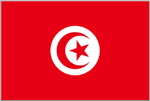
Vast desert spanning the entire width of Africa

No introduction is required for the world’s largest desert (excluding the poles, if you’re being particular). The Sahara spans the whole of North Africa, covering an area almost the size of China or the USA. It spreads over eleven countries, but is by no means homogenous in form. Much of the desert is rock or mountain, and while there’s no shortage of sand, it does not contain the world’s largest continuous sand sea – that takes the form of Arabia‘s Empty Quarter.
Since growing up in the United Arab Emirates, I’d always felt ironically like I’d never really experienced the desert proper, the isolation of being so far from civilisation. Of course back then I was too young to go camel trekking or dune-bashing, but I was nevertheless inspired. In 2008 I achieved my personal goal of trekking through the burning sands of the Sahara.

Classic camel train for the opening shot of this page. The imagery of the Sahara does not disappoint.
My foray into the Sahara began at the town of Douz, on the northern edge of the Grand Erg Oriental sand sea, which spreads across southern Tunisia and into Algeria. The road continues south to the “Key to the Desert” , seen here with a shroud. After that, there’s nothing but sand.


So we took a detour to the east, in order to join the oil pipeline road heading to the Libyan/Algerian border, which gives better access to the Erg (sand sea). Look out for camels.
There was of course no shortage of camels cruising around, but the modern ship of the desert is now the Toyota Landcruiser. It says something about the quality of the vehicle that everyone uses them these days. And yes, I was in one too.


Onwards down the pipeline road, which in places was becoming dangerously narrow due to the shifting sands. They must send ploughs down now and again, otherwise this road would be rapidly buried. Up ahead, this bloke has a horse in the back of his truck.
The Saharan desert rose, a crystalline formation of gypsum which is conspicuously for sale at every opportunity. Very popular, even Sting sang about them (seemingly).
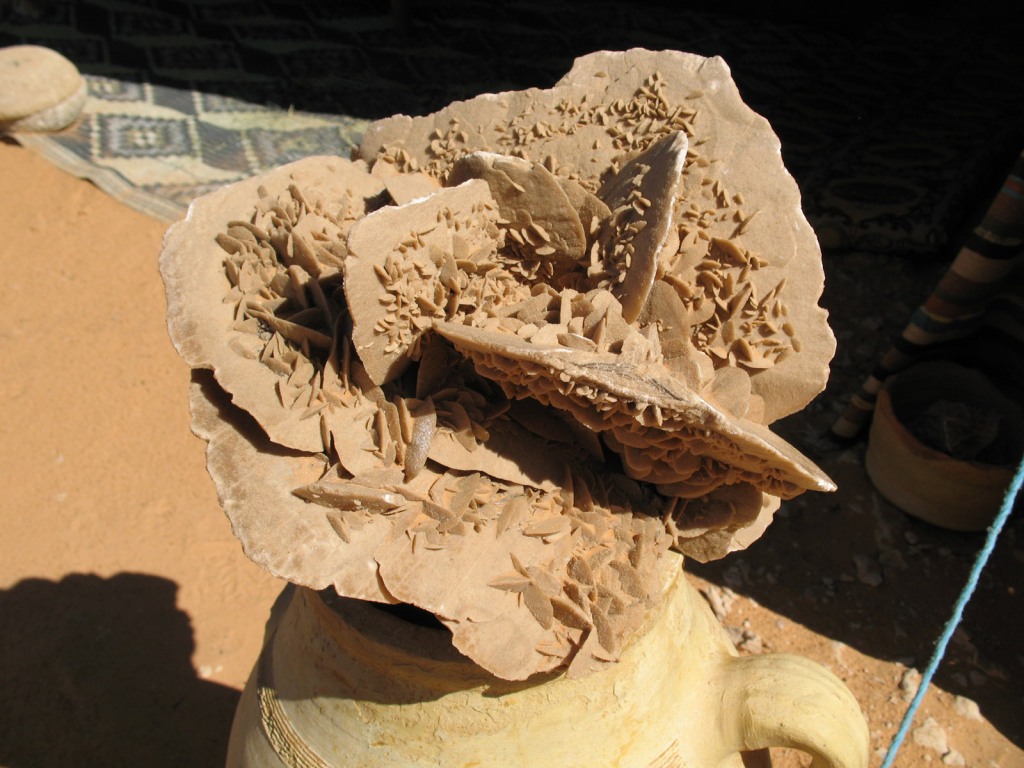
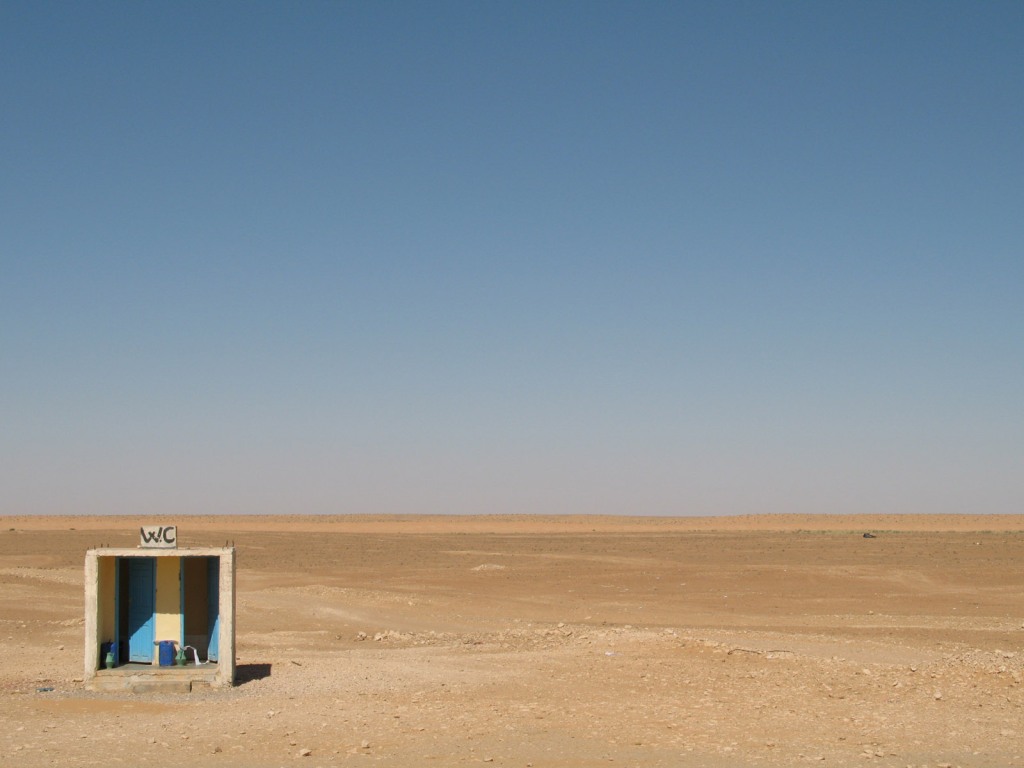
Saharan service station. It’s lonely on the desert John.
An example of the rocky desert which makes up much of the Sahara.

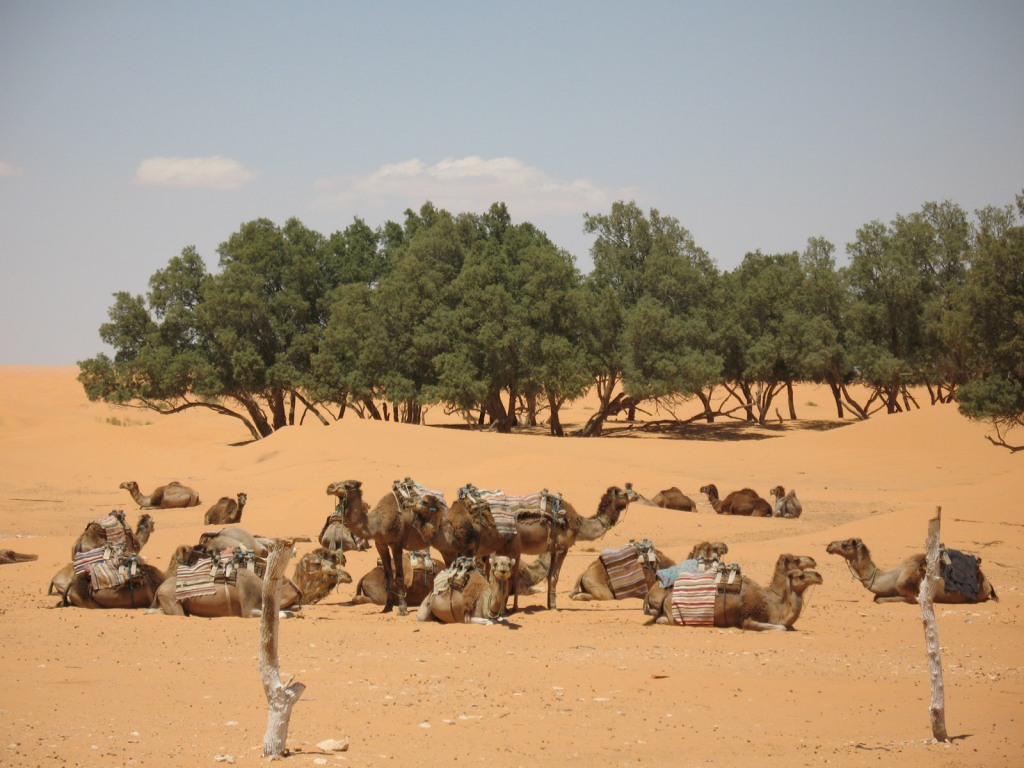
After a couple of hours’ driving through not-a-lot, we reached the oasis of Ksar Ghilane, as signalled by the flash of green and resting camels.
The oasis of Ksar Ghilane itself – the water is quite warm and comes out of the ground in such quantities that they’ve got a couple of square kilometres of palm trees out of it. The natural pool was a great place to laze in the afternoon.
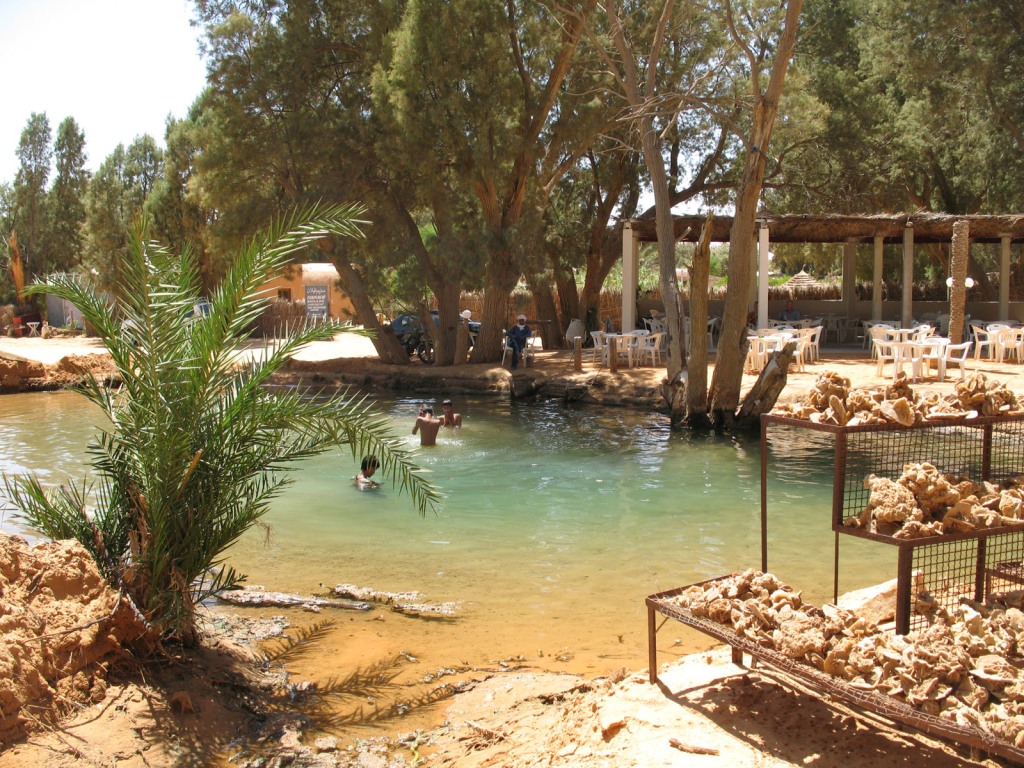
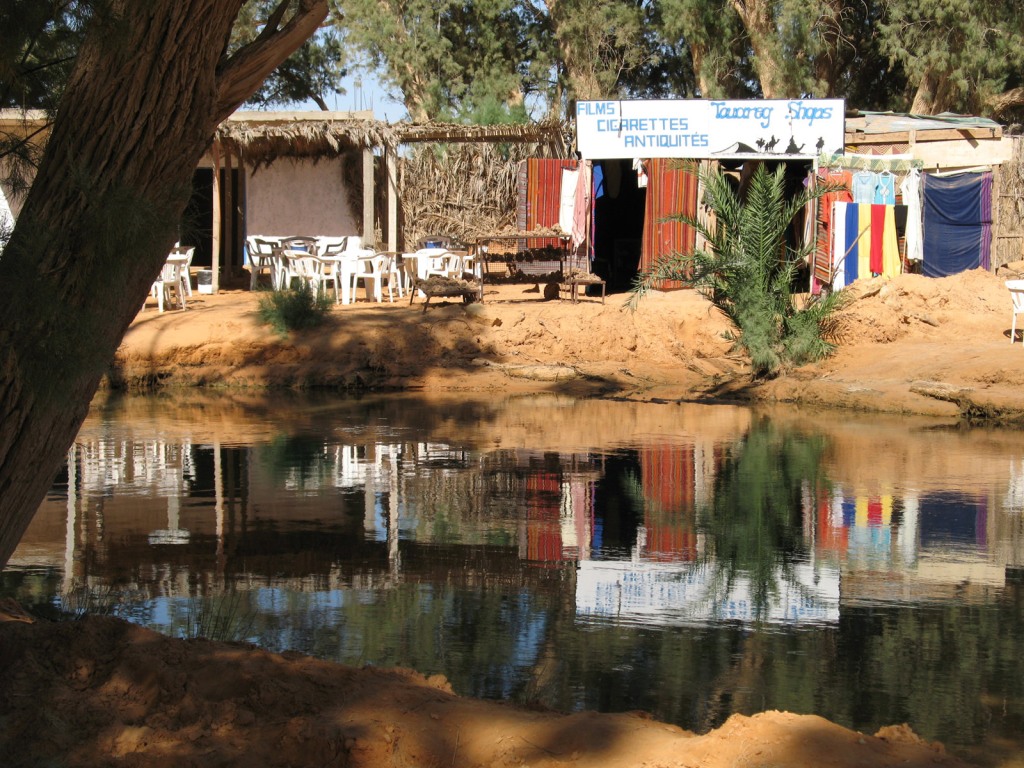
Some of the shacks surrounding the mirror-like oasis.
This is the point where the water actually bubbles up from the bowels of the earth. I’d never seen a natural spring like this before, and the water was fairly charging out.
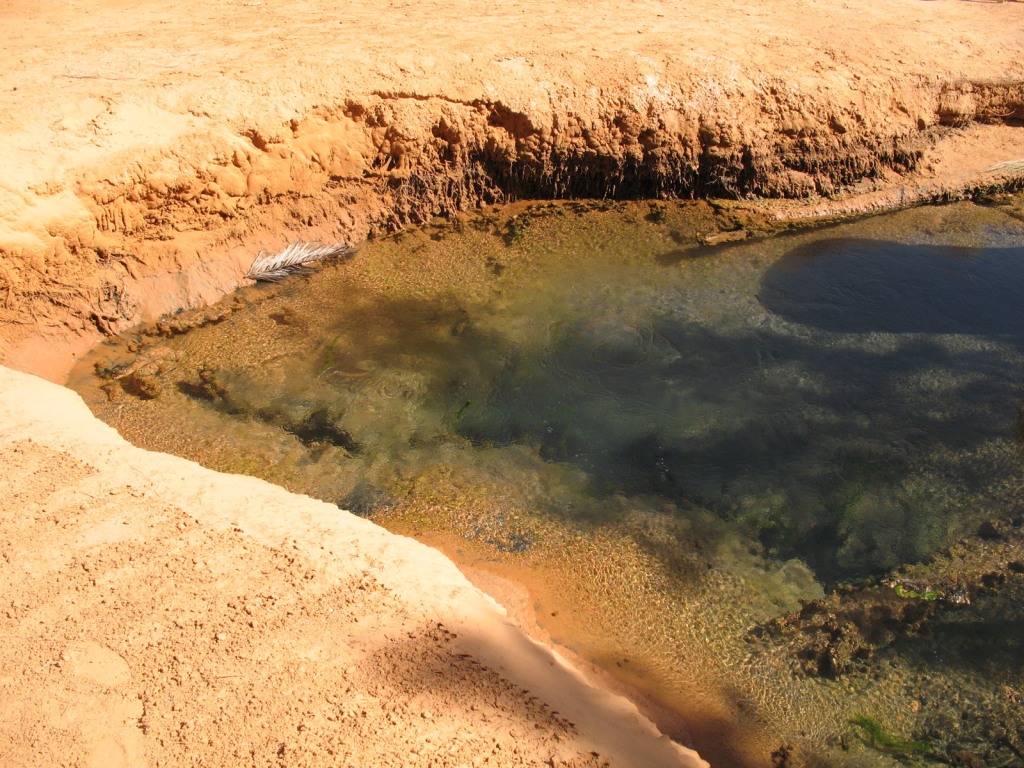
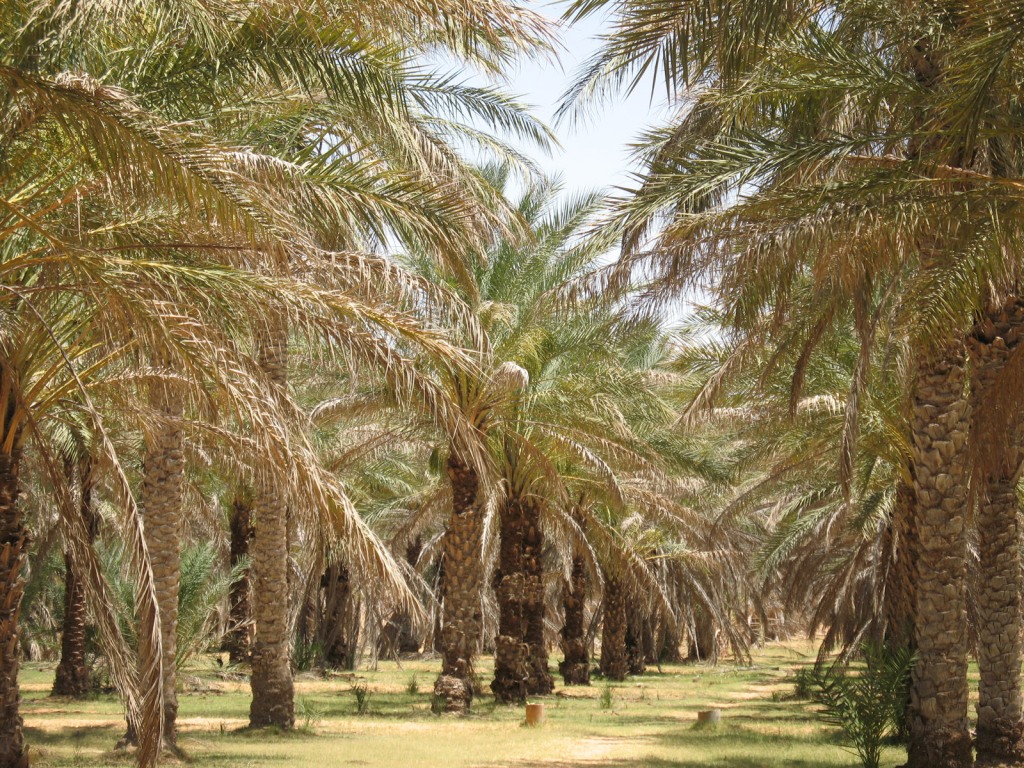
Ksar Ghilane oasis supports thousands of palm trees, which form the only greenery for many miles around.
Ksar Ghilane itself – a ksar is a fort, and the old structure sits a few kilometres from the oasis, accessible by camel or Landcruiser. I chose camel.


My trusty steed for the trek from the oasis to the ksar. He seemed quite happy plodding along, but was extremely uncomfortable to sit on.
There was even a cafe at the ksar. Okay, there were no staff and no produce, but it was shade nonetheless, from the 45 degree heat.
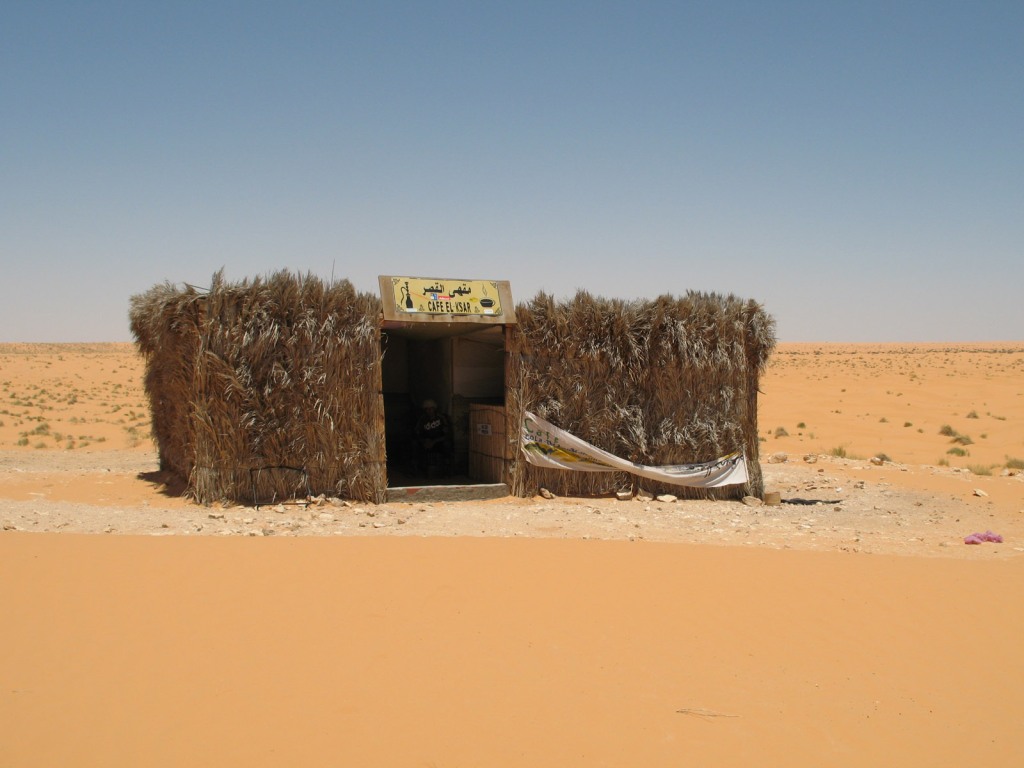
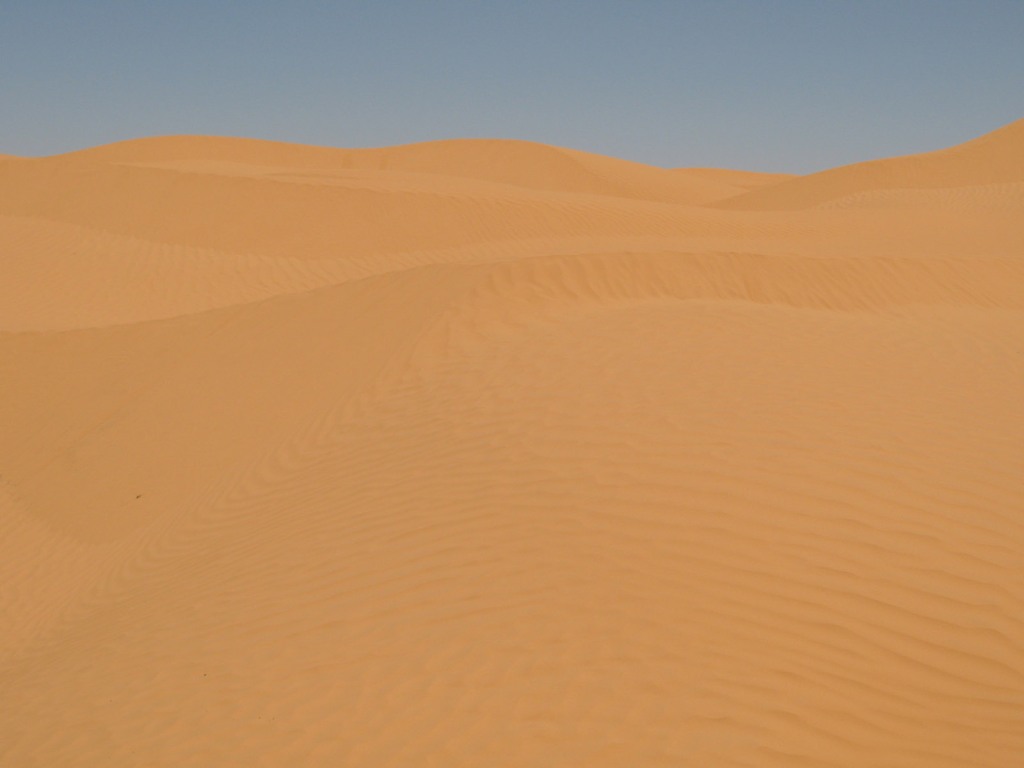
The sand of the Sahara was finer than any other I’ve seen, it would run like water down the sides of dunes when disturbed, and felt very clean. Perfect dunes and wind patterns.
Later that day we hit the dunes again, but this time in the Landcruiser. My driver explained in French that he was taking me to visit his mate, a nomad. “Do you need a map?” I asked – apparently not. After about 20 minutes of going up and down dunes, we were greeted first by his herd of goats.


My driver Taeeb spoke only French and Arabic, so communication was tricky, but his nomad buddy A’il spoke only Arabic, so that was even harder. He did however sit us in the shade of his tractor, lit a fire from some dry wood, produced some flour and water, made a dough then buried it in the sand on top of the hot ash. Twenty minutes later he dug up a loaf of unleavened bread – delicious with goat’s milk.
A’il’s tractor and goats are his life, and the tank is full of that most precious commodity, water. Taeeb sits on the left here, buying some goat’s milk.
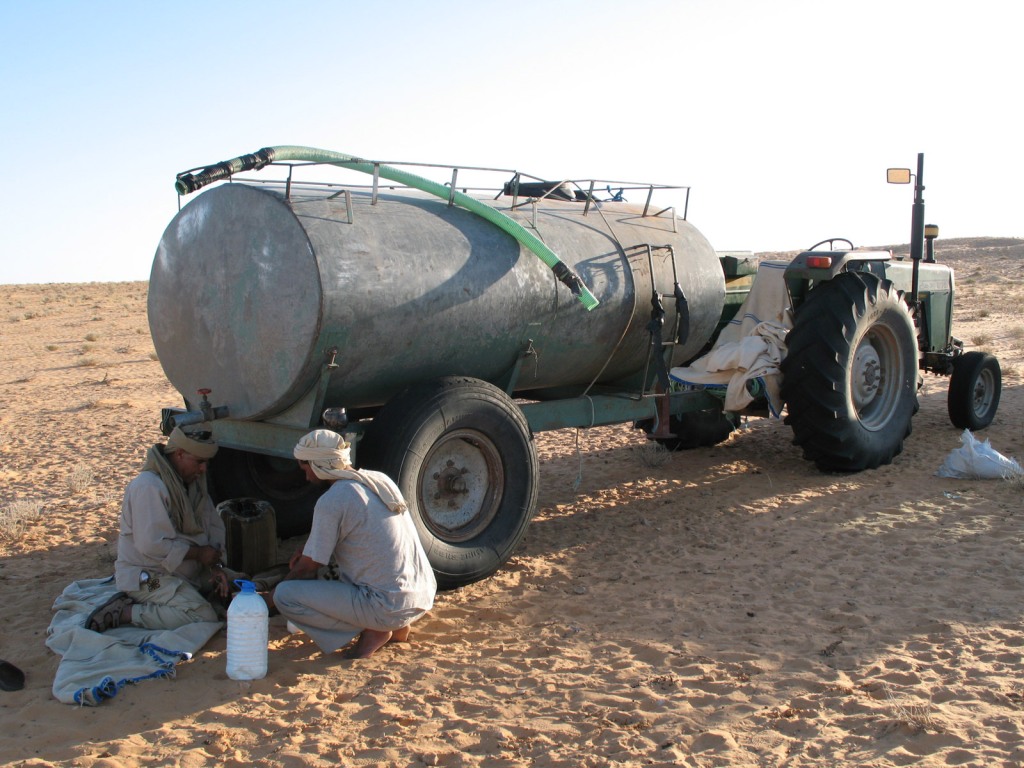
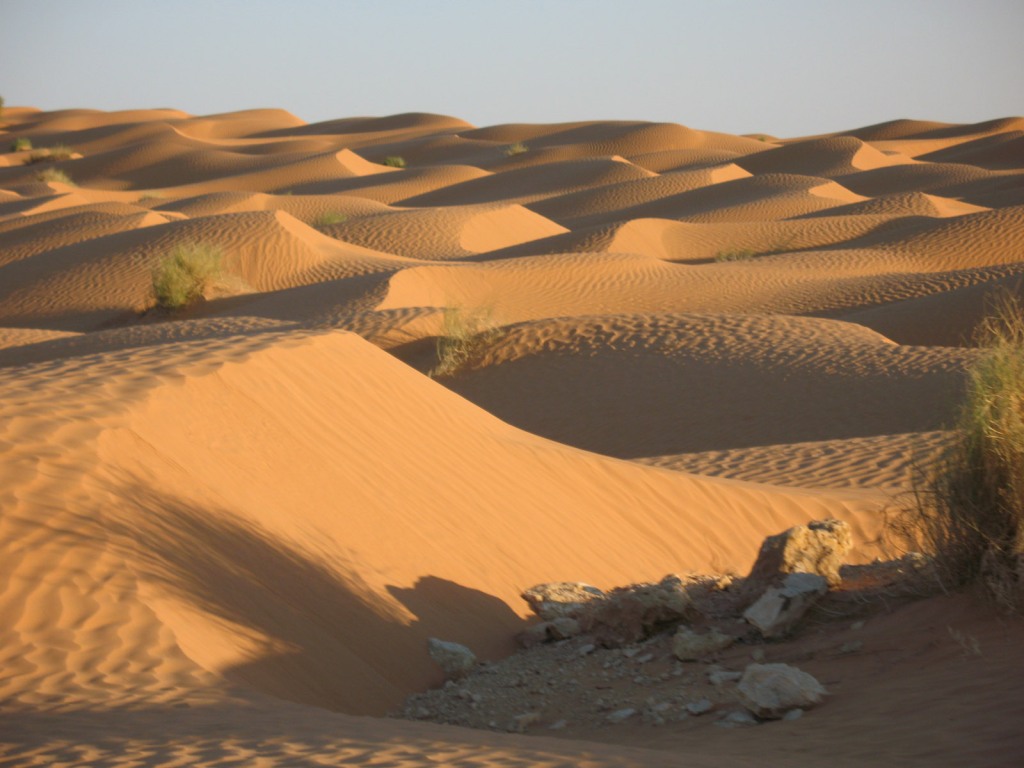
Heading back to the oasis, the dunes took on a different light as the sun sank lower.
A lone camel looks across the red desert of the evening. Perfect peace and serenity.

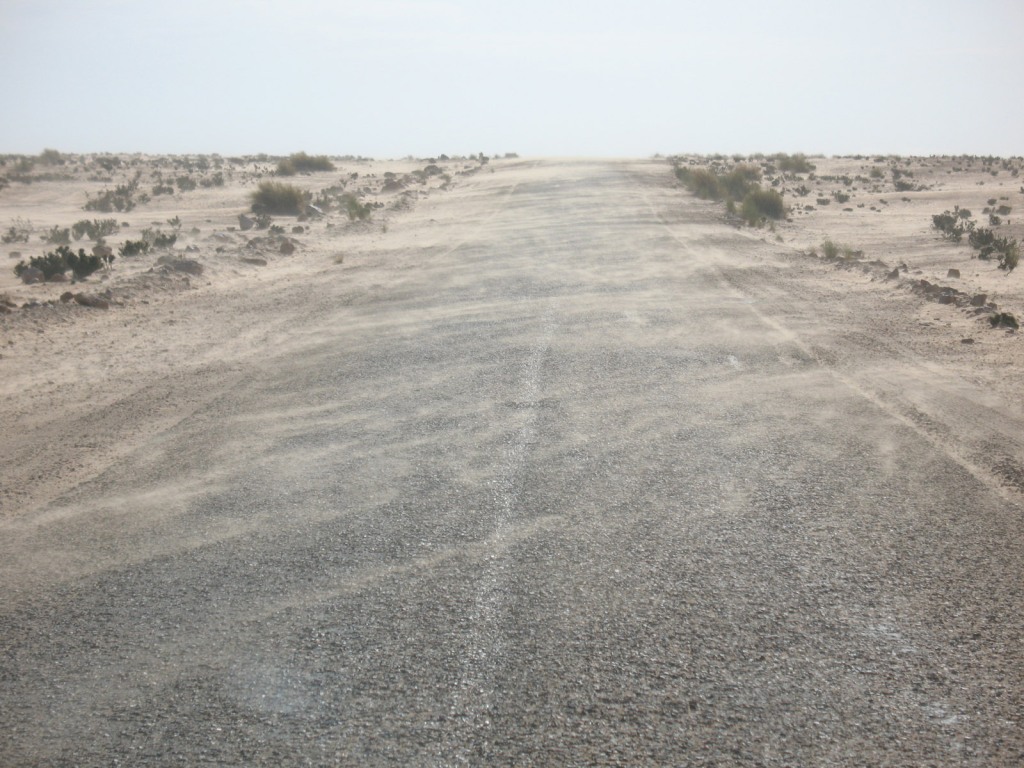
After a night in a Touareg tent (I considered the fancy Pansea resort, but £200 for a night in a tent, albeit air-conditioned and ensuite, was a bit much) we headed back to Douz on a very windy morning.
An Islamic graveyard in Douz, as sand-swept as the rest of the town.
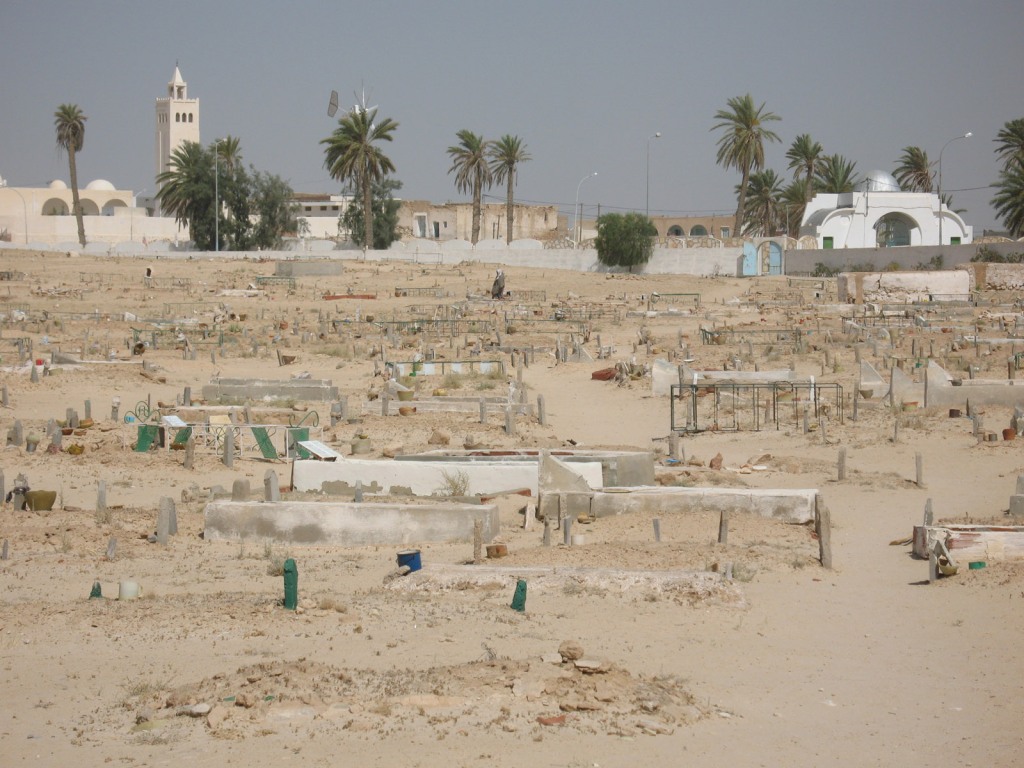

In Douz I stayed at El Mouradi Hotel, which was great value and right next to the key to the desert (see above). I took a brief wander past the key in the evening, and was treated to this view of camel trains returning from an expedition at dusk. I kept a mast in town in sight, as if I wandered too far I might not have come back alive. The following morning I headed on to Tozeur.
Created 2008 | Updated 2023
